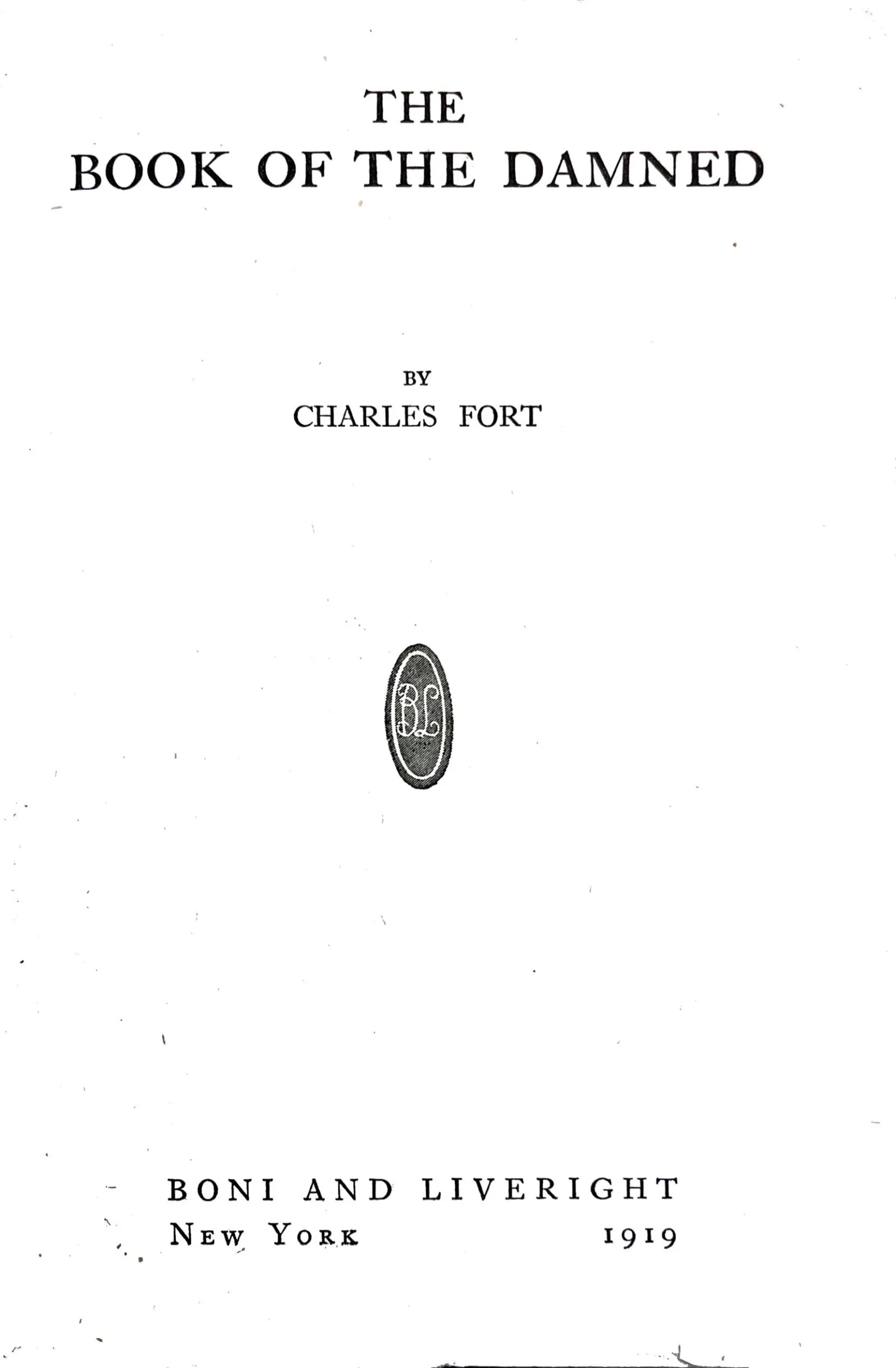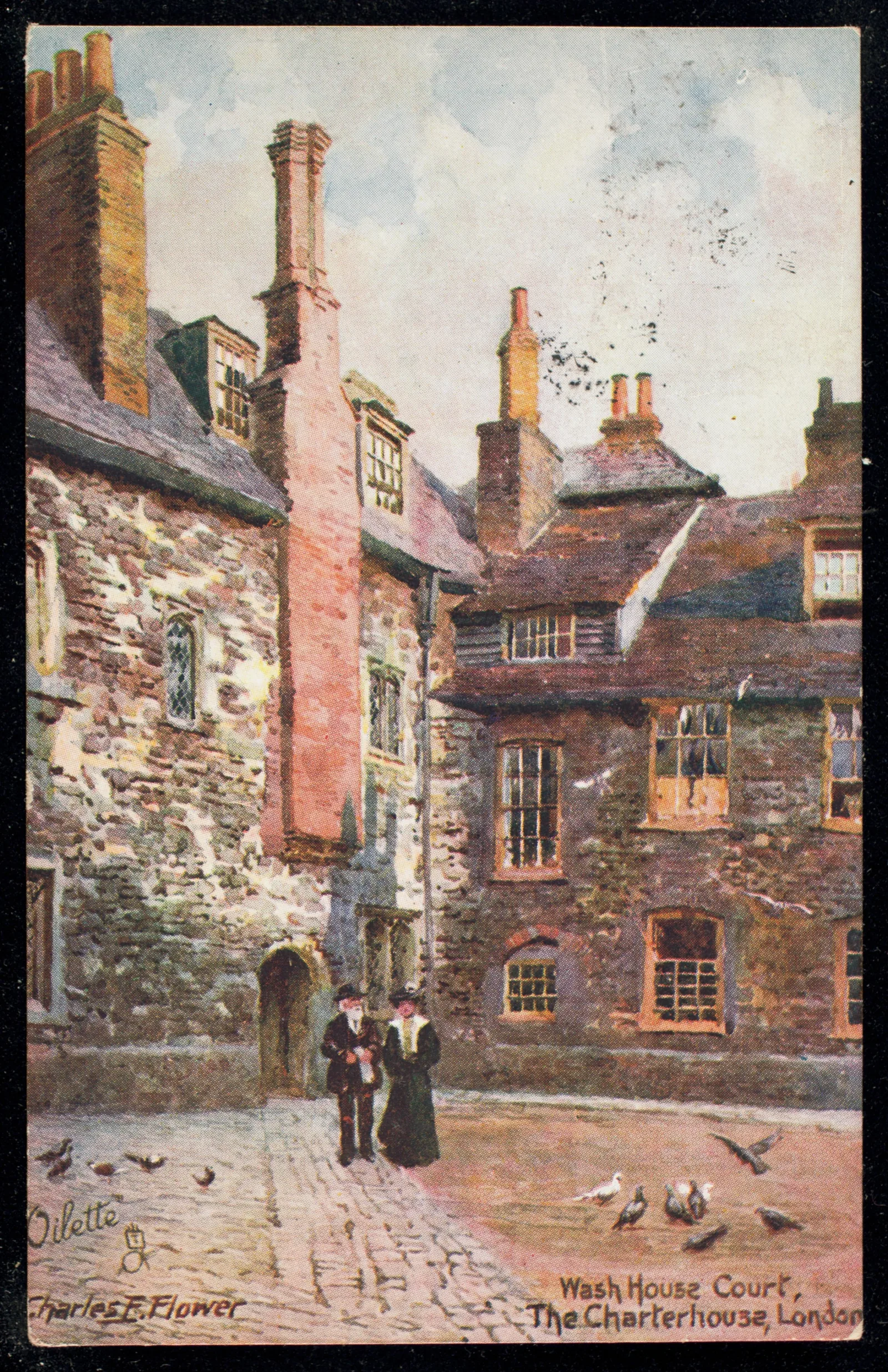A few months ago, the Wall Street Journal mentioned the Newberry’s copy of The Book of the Damned in an article about influential author Charles Fort. It was a surprising anecdote, as there isn’t anything particularly notable about our copy of a book that was widely published and distributed nationally.
With October upon us, it seemed a good time to take a look at the 1919 book and the possible reasons for our mention in the Wall Street Journal.
Fort was a leading anomalist, one who studies phenomena that appear to be outside of the realm of the scientific (e.g., UFOs). The Book of the Damned is organized into twenty-eight chapters that document the paranormal, the mythological, and the otherworldly. “The Damned” in this work doesn’t directly refer to the idea of spiritual condemnation. Rather, “the Damned” are the data and findings that are excluded by modern science. Though one imagines that devout Christians of 1919 may have found some of Fort’s assertions indeed damning.
It’s clear that Fort spent vast amounts of time researching the hundreds of anomalies that appear in the book, from storms that rain gravel from the sky to stone axes that once belonged to giants. There’s a lengthy tangent on the famous Krakatoa volcano that purports the eruption was a hoax ginned up well before 1883.
In the spirit of this Halloween season, here is an excerpt from a chapter on poltergeists, citing the London Times on September 16, 1841:
That, in the home of Mrs. Charton, at Sutton Courthouse, Sutton Lane, Chiswick, windows had been broken “by some unseen agent.” Every attempt to detect the perpetrator failed. The mansion detached and surrounded by high walls. No other building was near it.
The police were called. Two constables, assisted by members of the household, guarded the house, but the windows continued to be broken “both in front and behind the house.”

Fort goes on to cite dozens and dozens of unexplained phenomena, in sometimes rambling fashion. Many critics panned his work, but others like writer Ben Hecht praised him for his anti-authoritarian and subversive impulses. The recent Wall Street Journal article describes how Fort influenced many modern science-fiction writers.
Why it was thought the Newberry held one of the only copies of The Book of the Damned remains a bit unclear. We do hold spooky works like the seventeenth-century Book of Magical Charms. We also possess Hecht’s papers. But it appears the confusion stems from an Associated Press reporter who in 1947 cited the Newberry’s copy (“a rare book”) in a report distributed on national wire services. It was a brief item, five paragraphs, shared in response to recent sightings of flying discs most notably in Roswell, New Mexico. The piece goes on to name several historic instances of flying objects dating back to 1731—all sourced from The Book of the Damned. Just take this item from the September 1, 1947, edition of the Tipton (Indiana) Daily Tribune:

We don’t know why the AP reporter in 1947 thought this book was particularly rare. It was an era when it was much harder to track down information about the rarity of any particular book—prior to the publication of the printed National Union Catalog and the sharing of library holdings via WorldCat and other online databases. But before Halloween arrives, and events like Forbidden Newberry take place, it’s a great time to re-visit the work and its references to the unexplained, the mysterious, and the downright terrifying—and reflect on these events of the past and even today.
Interested in more content like this? "Forbidden Newberry" returns October 25 at 5:30pm, bringing out the scariest and most scandalous items from the Newberry collections.
